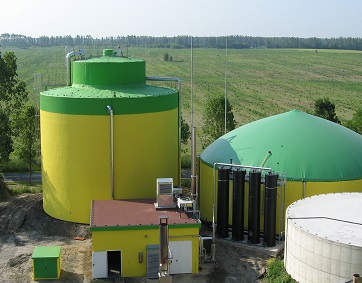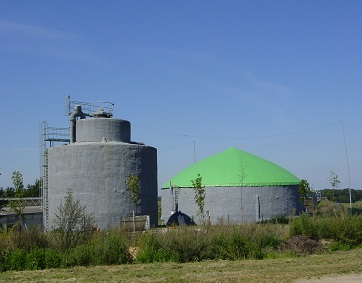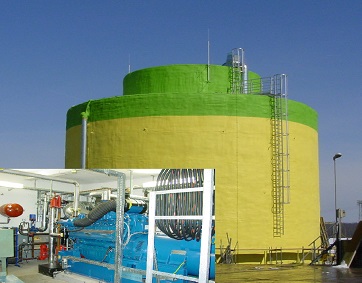The constant compression and expansion of the ferment allows cavities to form, through which nutrients can reach the bacteria. The flakes are able to grow without interruption, and very high process stability can be achieved.
Constant Temperature in the fermenter
An important factor to gain a high yield of biogas is constant temperature. Just as important is the gentile heating of the liquid manure. In the SMD, the constant temperature is maintained with approximately 8.000m of integrated wall and floor heating. With such a large surface area, it is possible to have a low supply temperature. Through gentile warming of the substrate, the bacterial strains can develop in the material and, thus, increase the biological effect of the system.
Other biogas plants with external heat exchangers must be heated to above their optimal temperature for efficient digestion. Therefore, the heat losses of the unit must be balanced. If additional heating is required, active ferment must be pumped through the heat exchangers. Only very few bacteria can survive such a dramatic rise in temperature and, consequently, the whole process, –from hydrolysis to methane production– must restart from zero.
In some other digesters, the heat exchangers are fixed to the wall. Thus, the digester might show a poor heat transfer, due to the fact that thin surfaces require high temperatures to stay warm. High temperatures destroy the bacteria. The heating pipe becomes overgrown with fibrous matter, which reduces heat transmission and efficiency; therefore, heat the transfer process becomes worse over time. The chamber must then be emptied and the heating pipe cleaned. A loss of earnings is guaranteed.
Extraction of ground sludge
Due to the fermenting process, the sediments fall to the bottom. Over the years, the sediments layers grow, decreasing the volume of the digester, thereby decreasing the biogas production. Consequently, the operator of the biogas plant must stop to remove the sediments.
Thanks to the sludge drain in the SMD, the extraction of ground sludge and grit can be done without stopping fermentation. This enables the SMD to work with complicated feedstock, such as poultry slurry, despite the fact that it normally has a high percentage of sand and grit.






